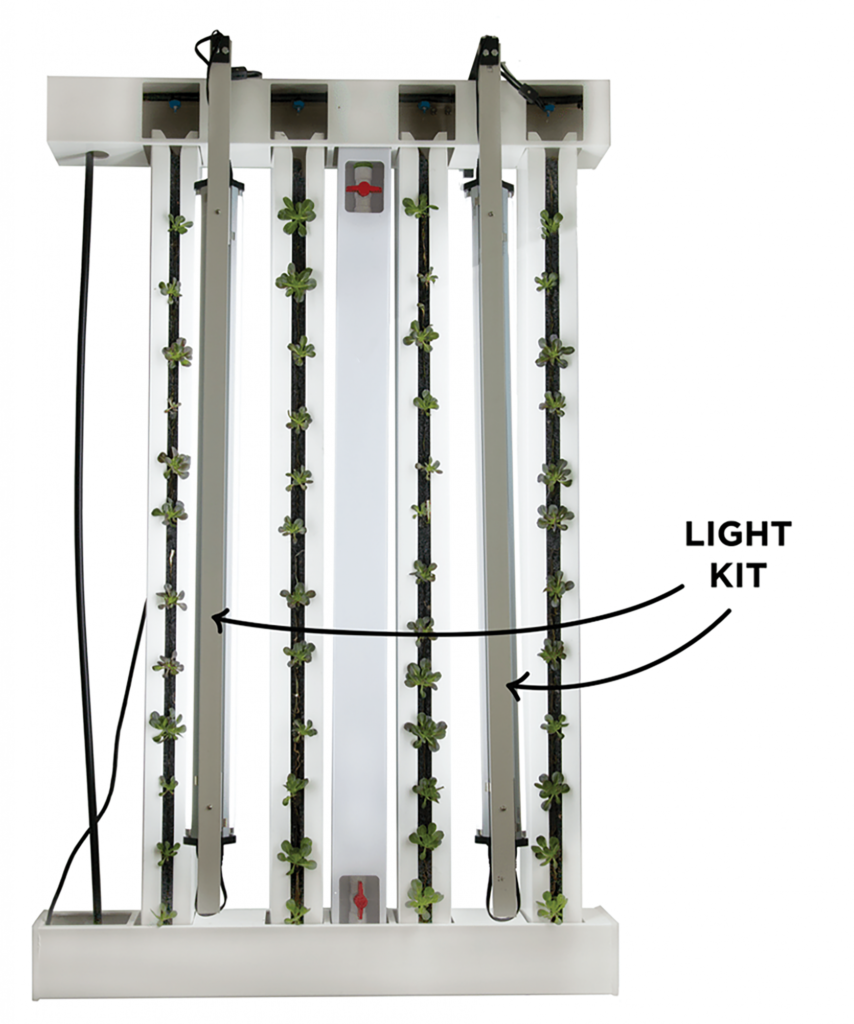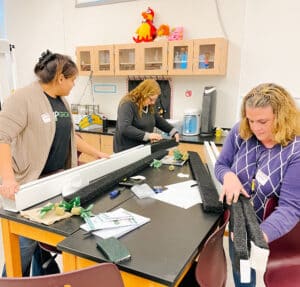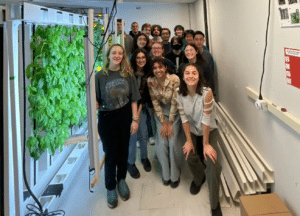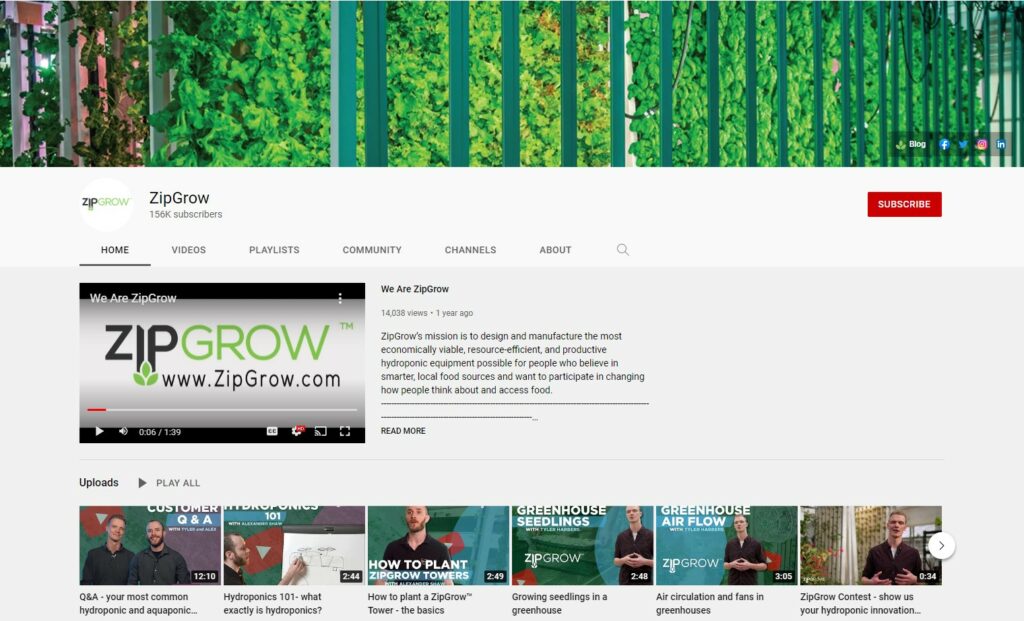We recommend supplemental lighting whenever
(a) you have shorter daylight hours, especially in northern climates;
(b) when market demand for your crops is steady through the colder, darker months; and
(c) when your growing environment is indoors or is blocked from natural sunlight by walls or other buildings.
If you are thinking about using LED lighting, these 10 tips (thanks to George Chan over at LumiGrow for his thoughts) can help you make an informed decision. We want to thank our partners over at LumiGrow for their expertise in LED lighting applications.
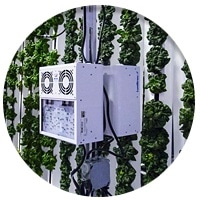
#1 – Don’t settle for cheaper HID lighting solutions
One of the first decisions you will face is whether to buy high end LED lighting, or a middle range HID solution. Many people think they can save up to 10x the costs up front in this way, but this is a misconception. The costs for LED lighting, while not as low as a comparable HID solution, are still well within range to justify their costs. When you plunk down the change for a high quality LED solution, you can rest assured that your investment will pay off.
Leading LED light systems consume half the energy of high-intensity discharge (HID) lamps while they produce much less heat. Additionally, LED lights install in just minutes, last 10+ years and deliver cost savings from the first electricity bill. Typically users see a return on investment (ROI) within <1 to 3 years.
Read more: How airflow affects heat
#2 – Help your LED lighting penetrate the canopy
The more power you have, the better your light penetration will be. LumiGrow Pro 325s (one of the preferred lights for ZipFarm), penetrate the canopy as effectively as a 1,000 Watt HID light, but with less wasted electricity. Light can also be designed with more light at wavelengths that are photosynthetically active but very effective at penetrating the plant canopy.
Read more: Switching from HID to LED can save up to 70% electricity
#3 – Position your lighting for success
One common misconception is that you have to place your LED lighting very close to the plants in order to have enough intensity to promote healthy growth. The equipment that we use here at Bright Agrotech allows light to be placed three to four feet away from the crop canopy and still provide sufficient light intensity to promote healthy growth and fruiting.
#4 – Your lighting choices can make or break your indoor farm
For greenhouse growers, the number one operational cost is usually labor. This is also true for indoor growing operations. However, when you consider using supplemental lighting, you will find that energy costs and lighting choices can significantly affect your profit margins.
The recommendation? Don’t cut any corners when you are working to understand the true costs of your lighting solution, including depreciation expense and energy costs. Do the numbers and understand that many costs like bulb replacement, maintenance labor, etc. are often hidden.
#5 – Plan and design around your lighting solution
We often suggest that our growers use a CAD (Computer Aided Design) tool, such as the free version of SketchUp, in order to avoid confusion down the road. When you are planning an indoor farm, some constraints that will affect your layout include: floor plan, availability of water, electricity, etc.
With an LED lighting solution, you can think of it as the primary input for your plants. This means you should approach your design and layout with your lighting in mind, rather than as an afterthought. The reason is simple: when you invest in a high quality lighting solution you need to plan accordingly in order to get the most out of your system.
#6 – Get to know your spectral quality settings
You have heard about spectrum and lighting efficiency. I can’t get too geeky here since I am not a lighting specialist. But I can tell you two important facts.
Number one: light can be wasted. That’s right; if the frequency of lighting is not adjusted to the plant’s natural photosynthetic receptors, it can be wasted. Like water off a ducks back. That is why we are seeing so much innovation around lighting. We want to use every available photon to grow plants.
And number two: having the correct spectral settings can affect the color, texture, taste, and even the antioxidant contents of your crops.
Read more: From LumiGrow’s benefits of adjustable-spectrum lighting
#7 – Use the right amount of lighting
Even with the correct spectrum, you can still waste your lighting simply by using too much of it. Your plants have a fixed ability to absorb light. If your settings are too high, you will end up sending those photons into the eternal place of wasted light (wherever that is).
The solution? Use a dimmable or adjustable lighting fixture.
#8 – Increase the reflectivity of your growing environment
Have you ever seen a three year old boy learning to pee standing up? There’s no telling where it’s going to go.
Sometimes, your light photons behave in pretty much the same way. They follow the laws of (light) physics, but that doesn’t mean they end up where you intended them to. They will generally head in the direction you point them, but you will also be losing some of your lighting towards the ceilings, walls, or wherever else they may want to go.
The solution? Use light-colored surfaces to reflect lighting back towards your plants.
See more: ZipGrow design to increase light conservation
#9 – Consider light movers and rails to distribute your lighting
When you are using high quality LED lighting, you may have lighting to spare. You can save costs by putting your LED lighting on a moving rail. This can distribute the light to a wider area without compromising the quality of plant growth. Plants are great at averaging out light intensities.
#10 – Test Your System
Your plants will thrive according to several primary inputs including lighting, nutrients, water, temperature, CO2 levels, and more. There is no ready made formula for getting these right.
Our suggestion? Find the recommended settings from the product manufacturer, and make time for testing and experimenting in the early stages of your farm. While you may not reach peak production for several months (or even longer), knowing the boundaries of your system will prove to be very important to your future productivity.
Start with the recommended settings for your system, and take an iterative approach. This means change one thing at a time, and meticulously document the results. Sound like a lot of work? You bet it is, but it is much better than running your farm for years while getting less than optimal production.
LED Lighting solutions are opening up a world of possibilities for growers in northern climates and other light-scarce areas. Take the time to understand these variables and maximize your growing success!


